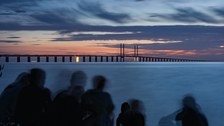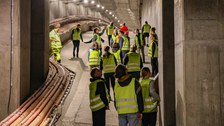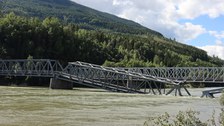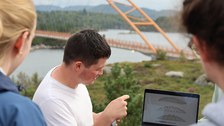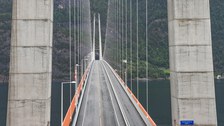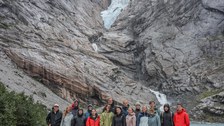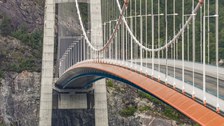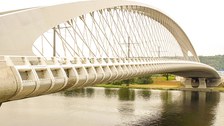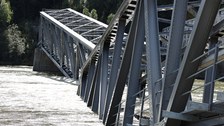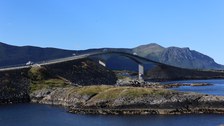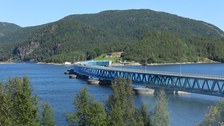Bridge building excursion 2023 – Norway
13 days, 17 bridges, 5 construction sites and 1 goal: to deepen the teaching content of the bridge construction module.
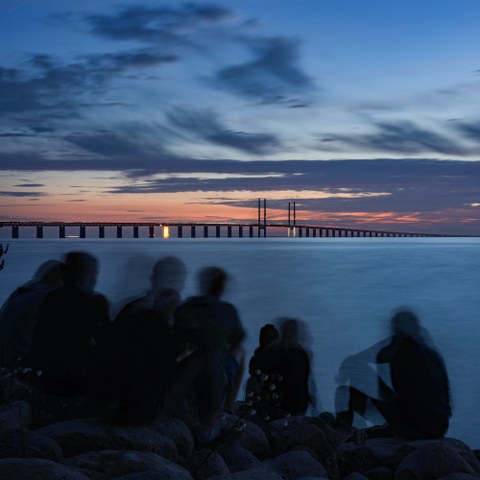
Pause mit Blick auf die berühmte Öresundbrücke
This year's bridge construction excursion took 17 students and 3 research assistants of the IMB through Norway from August 13 to August 25. The program included outstanding examples of civil engineering, such as the Hardanger Bridge, Norway's longest suspension bridge, and the Brandangersund Bridge, Norway's superlative network arch bridge. But a site visit to the Rogfast Tunnel, the longest road tunnel in the world when it is completed in 2032, was also not to be missed.
The excursion was organized this year for the first time in cooperation with the Friends of Civil Engineering. Many thanks to the association as well as all sponsors who made this excursion possible through their financial support!
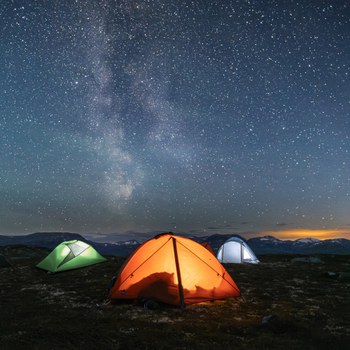
© Thilo Grosse
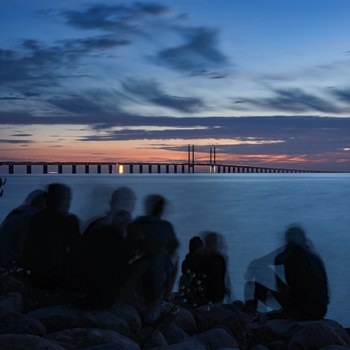
© Thilo Grosse
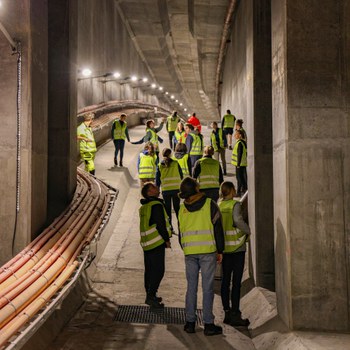
© Thilo Grosse
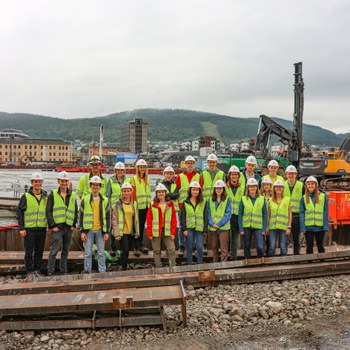
© Thilo Grosse
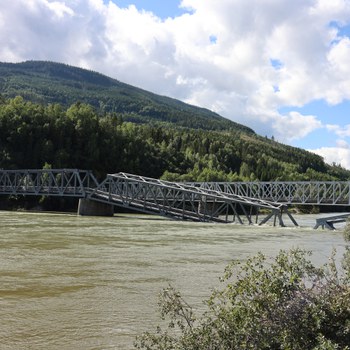
© Thilo Grosse

© Thilo Grosse

© Thilo Grosse
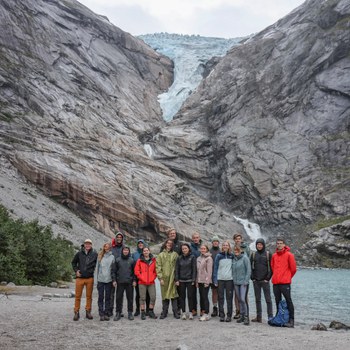
© Thilo Grosse
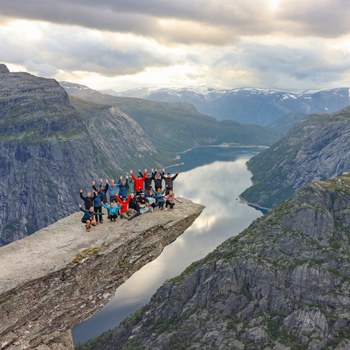
© Thilo Grosse
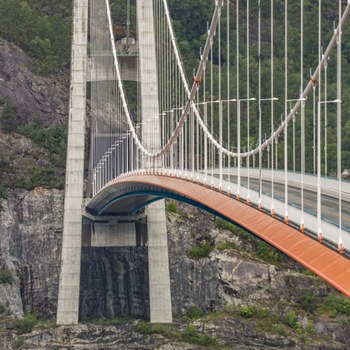
© Thilo Grosse
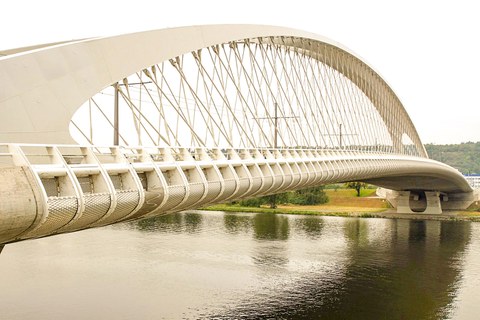
© Sebastian Wilhelm
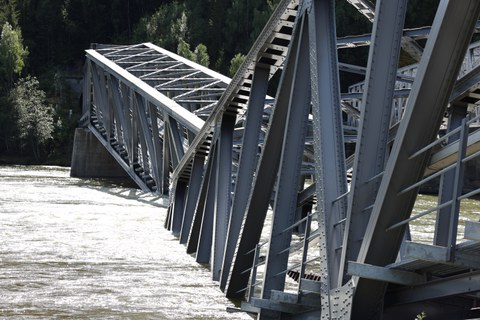
© Thilo Grosse
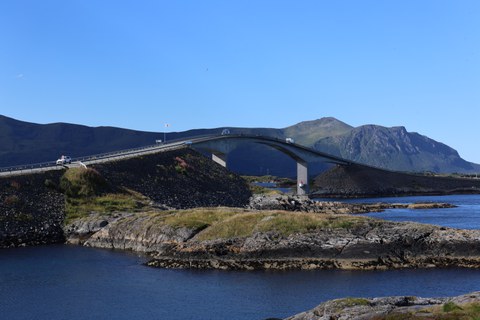
© Thilo Grosse
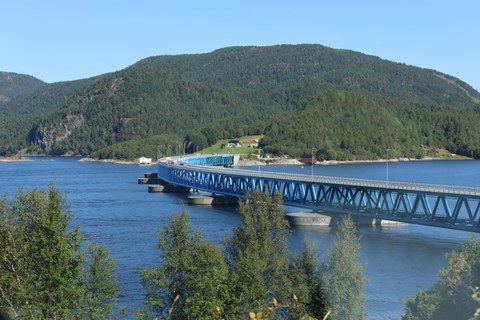
© Thilo Grosse
Report from IMB's yearbook 2023
very summer, our institute offers the traditional bridge-building excursion for students from the 8th semester. The aim of the excursions is to deepen theoretical knowledge of bridge construction on practical examples. A feeling for dimensions and the imagination of whether a bridge design really fits into the respective environment is best developed on site. In particular, seeing and experiencing things that have so far mainly been discussed in theory, walking on a box girder, inspecting bridge bearings or the tendon layout improve basic theoretical knowledge.
The main features of each selected building are first presented in a short student lecture. The structure and its special features are then inspected and discussed in the group. The aim is to sharpen the feeling for a good design. The content of the excursions is largely prepared and organized by the students themselves. This, along with camping and the numerous shared experiences, leads to strong team spirit.
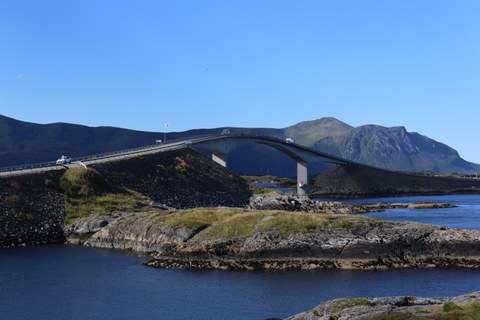
The Storseisund Bridge
In the summer of 2023, 17 people set off on an excursion to Norway to visit long-span cantilever bridges, floating bridges and bold wooden bridges. The agenda included 20 bridge visits, four of which were under construction, as well as one tunnel construction site. Three minibuses took the group on the approximately 4200 km route from Dresden via Oslo to Kristiansund in the far north and back via the Atlantic Road. One highlight was the cantilever Storseisund Bridge, the longest bridge on the Panorama Route with a total length of 260 m. Due to its curved shape, the perception of the bridge changes depending on the viewer’s perspective.
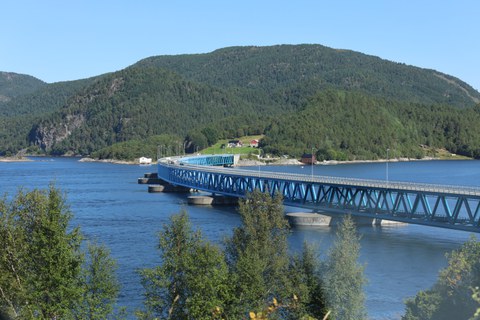
Bergsøysund Bridge, the first floating bridge in Norway
Many deep fjords and a challenging topography are a perfect setting for a special and rather rare type of construction: floating or pontoon bridges. The Bergsøysund Bridge, for example, was the first floating bridge in Norway. With a length of 830 m, it is one of the longest pontoon bridges in the world. To absorb the horizontal forces from currents, waves, and wind, the pontoons were arranged arch-like with a radius of 1300 m, thus creating an arch bearing effect to the supports.
The variety of arch bridges ranged from the Kylling Bridge, inaugurated in 1913 and still in operation today as a railroad bridge, to the Brandangersund Bridge, completed in 2010, the network arch bridge with the world’s greatest slenderness of 198!
Impressive cable-stayed bridges welcomed the team right at the start of the excursion when crossing the Øresund Bridge and later when visiting the Uddevalla Bridge, the Stavanger City Bridge, and the Nordhordland Bridge, a combination of floating and cable-stayed construction. The Hardanger Bridge, the longest suspension bridge in Norway with a main span of 1310 m, completed the bridge ensemble.
The visit of the Rogfast Tunnel construction site was another highlight. The tunnel has been under construction since 2018 and will be the longest road tunnel in the world with a length of almost 27 km when being completed in 2033.
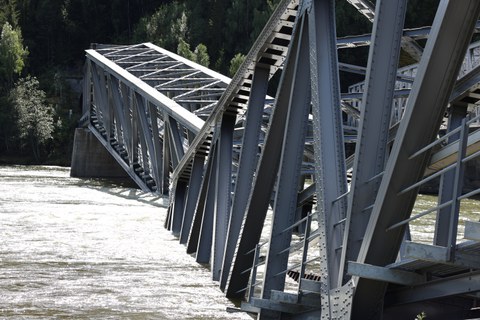
A result of storm Hans: the collapsed Randklev Bridge
The team encountered the effects of storm Hans in August 2023 at various locations during the trip through the particularly badly affected region of southern Norway: flooded roads and campsites, huge waterfalls and the collapsed Randklev railroad bridge over the river Lågen. Due to the extreme water masses, a central pillar of the steel truss bridge was undermined and finally washed away.
In addition to intensive sightseeing and long days in the busses, sporting activities provided variety. After a night-time walk to the impressive opera house in Oslo, we finished the day on its roof with a view of the glowing skyline and the sparkling Oslofjord. On a hike to the Briksdalsbre glacier, some brave souls even dared to take a dip in the ice-cold water of the glacial lake. An evening hike led in the light of the setting sun and later the headlamps to a quiet plateau, where the tents were pitched under a unique starry sky. We also hiked the Trolltunga (troll tongue), a horizontal rocky outcrop and one of Norway’s most famous landmarks. The approximately 10 m long rocky outcrop, which tapers to just a few centimetres at the tip, is located around 700 m above the Ringedalsvatnet reservoir and offers a fantastic view.
The excursion provided unique and unforgettable memories and we would like to thank all the sponsors.


